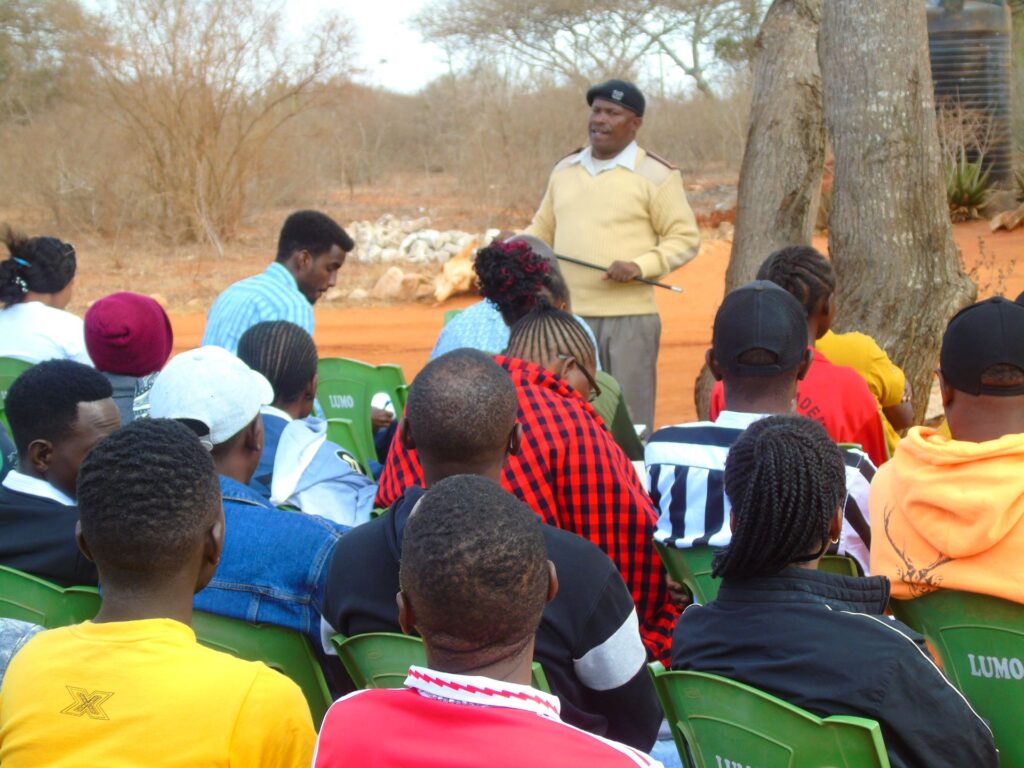
In the heart of the pristine wilderness that is LUMO Conservancy, a significant event recently unfolded, uniting the community, government authorities, and local conservation organizations in a critical discussion about poaching. This remarkable gathering was made possible through a collaborative effort between LUMO Conservancy, the Ministry of Wildlife Kenya, and the Taita Taveta Wildlife Conservancies Association. The objective? To explore the underlying causes of poaching and brainstorm effective strategies to curb this destructive practice.
Understanding the Roots of Poaching
Poaching, the illegal hunting or capturing of wildlife, is a grave threat to our precious natural heritage. It robs our ecosystem of its diversity and disrupts the delicate balance of nature. The discussion began by delving into the various reasons why some individuals resort to poaching:
- Economic Pressures: Poverty often drives people to poaching as a means of survival. The lack of alternative livelihood options can lead individuals to exploit wildlife for financial gain.
- Cultural Factors: In some cases, traditional beliefs and practices may perpetuate the demand for certain wildlife products, such as ivory or animal parts believed to possess medicinal properties.
- Lack of Awareness: Insufficient knowledge about the consequences of poaching can contribute to the problem. Raising awareness within communities is crucial to combatting this issue.
- Inadequate Law Enforcement: Weak law enforcement can embolden poachers and make them feel that they can act with impunity.
Collaborative Solutions for a Brighter Future
The discussion didn’t stop at identifying the root causes. It shifted its focus to proactive measures that can be taken to reduce poaching cases in LUMO Conservancy:
- Community Engagement: Empowering the local community with knowledge about the value of wildlife and its role in sustaining ecosystems is pivotal. Education and awareness programs can reshape attitudes and discourage poaching.
- Alternative Livelihoods: Creating sustainable sources of income for community members, such as eco-tourism initiatives and vocational training, can alleviate the economic pressures that drive poaching.
- Strengthening Law Enforcement: Collaborating with local authorities to enhance surveillance and anti-poaching measures is essential. This ensures that those who engage in poaching face the consequences of their actions.
- Conservation Education: Establishing educational programs within schools and communities that emphasize the importance of wildlife and conservation can foster a culture of respect for nature.
- Community Policing: Encouraging communities to take ownership of their natural resources by forming anti-poaching community patrols can be an effective deterrent.
A Call to Action
The anti-poaching discussion held in LUMO Conservancy serves as a beacon of hope for the conservation of our wildlife. It demonstrates the power of collaboration between the local community, government authorities, and conservation organizations. By addressing the root causes of poaching and implementing proactive solutions, we can work together to protect our natural heritage.
As responsible stewards of our environment, it is our collective duty to ensure that future generations can experience the wonders of LUMO’s diverse and thriving ecosystem. Let this discussion be a testament to our commitment to preserving the rich tapestry of life that defines our beloved conservancy.
Together, we stand against poaching, and together, we will secure a brighter, more sustainable future for LUMO and all its magnificent inhabitants.
